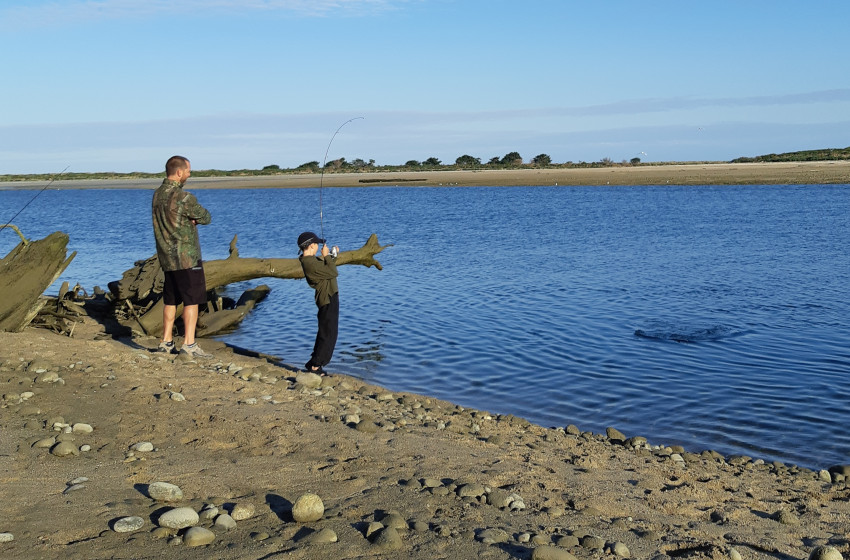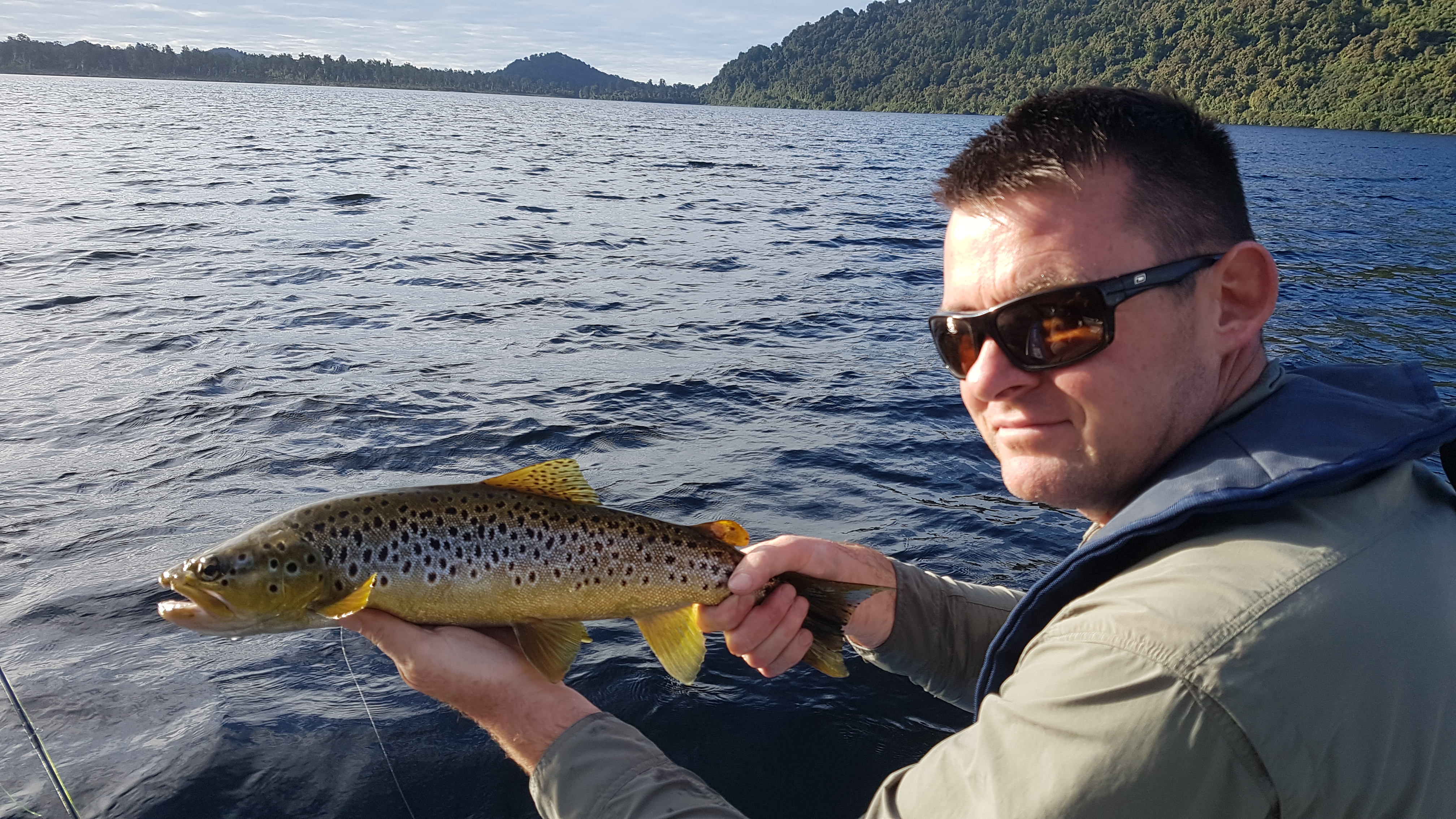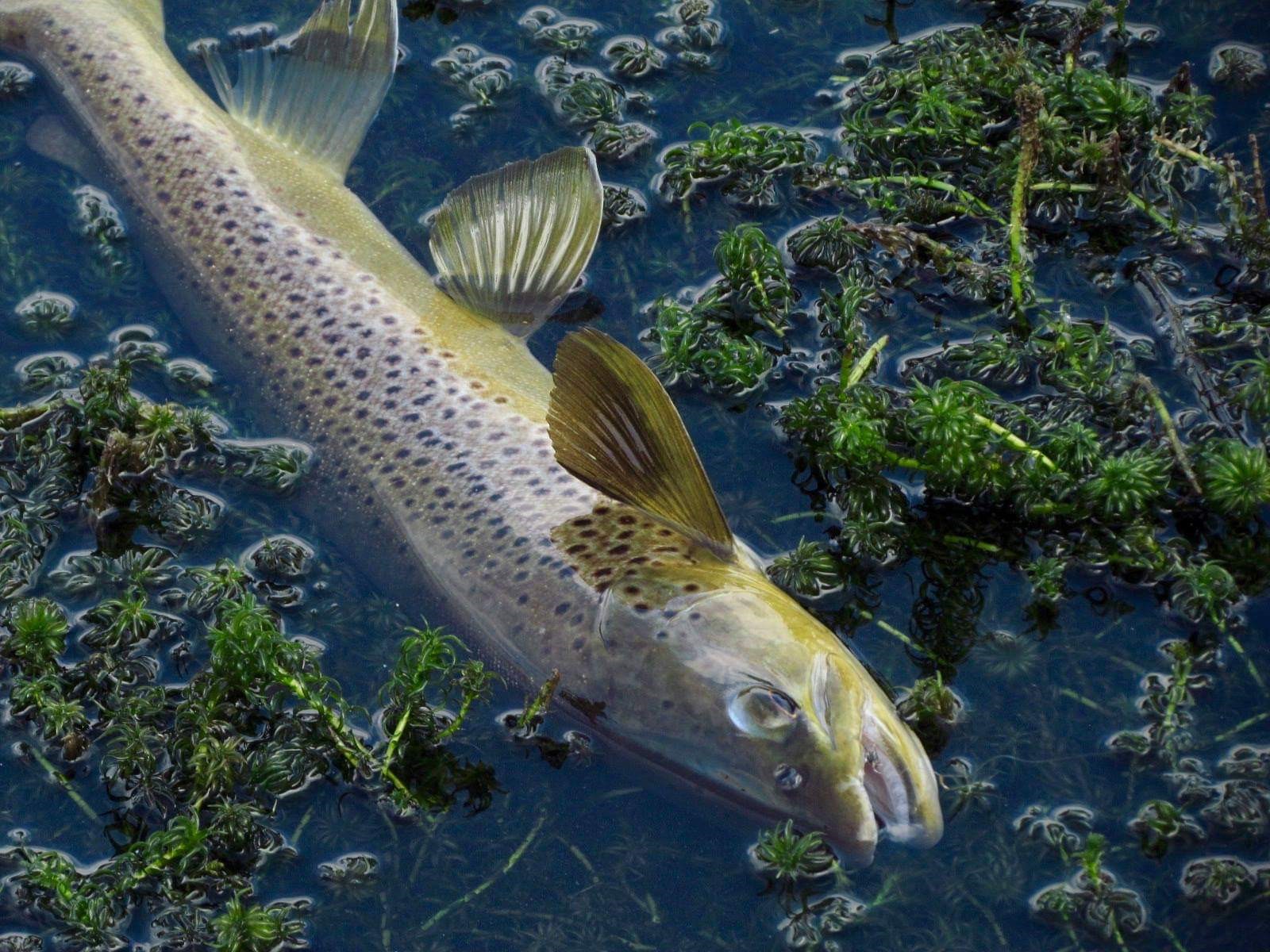West Coast Reel Life February 2019
- West Coast
- 26/02/2019

Salmon numbers building at river mouths
I thought I’d waste no time in addressing the question many are asking - are there any salmon getting caught?
Top right: Isaac Williamson fights a large fish at a West Coast river mouth with father Simon coaching him (Photo Baylee Kersten).
The answer is they are about to be!
As mentioned in our previous Reel Life, any serious fresh down the rivers after mid-February will bring in schools of salmon.
As I write this on February 18th , looking at the forecast for this week, there’s significant rainfall on its way !
Which means that as you read this, the rivers are just clearing and there should be salmon in the lower reaches of many West Coast rivers waiting to get caught.
As for other regions, they’re also finding that with low river levels, the salmon aren’t spread out but are building up at mouths and coming in big runs following significant rain.
In summary, it appears that this season rain equates to salmon, and lucky for us coasters, we typically get plenty of rain.
Tips to catch your first coast trout
In recent ranging trips I have met a lot of new anglers who are struggling to catch their first trout.
Therefore, I thought I’d share a few of the tips I typically give to folk who are taking on this challenge.
My first advice is read your sports fishing regulations, to ensure you fish legally and if you meet a ranger out on the water, it will be a positive experience.
Next, I would recommend finding trout that are naive; don’t spend hours targeting trout in a well-known spring creek or small river, as even experienced anglers struggle with them.
You’re better to spend your time at our larger lakes and main river systems where trout get a lot less fishing pressure.
Get the correct equipment, as trout are known to be smart so a ‘she’ll do’ attitude won’t bring much success.
Ensure you have line that’s between 2.5 and 5kg and you have a proper trout lure, such as the good old black and gold toby.
Target the eye of the pools in rivers, as that’s a good spot for feeding fish to hold.
As for lakes, fish around stream mouths, especially when they’re in flood.
Lastly, don’t forget that West Coast Fish & Game allows the use of bait fishing, and nothing looks more real than the real thing!
So go find some worms or bullies, typically the kids love that part, and fish them under a float with a small hook.
The bait should be a foot or two off the bottom for best results.
For more information or clarification, check out the resources available on our Fish & Game website, www.fishandgame.org.nz

James Teen with a trout in good condition for a West Coast lake. (Photo Dean Kelly)
Trout in top condition
The cicadas are still chirping and the trout fishing just keeps getting better.
Not only does this great weather make for enjoyable fishing, increased insect activity and clear rivers, it results in great-conditioned trout.
A lot of our rivers and lakes can handle the hot weather, and don’t heat up enough to put trout off the feed, therefore they can capitalise on the abundance of food.
Another big factor that influences trout populations on the West Coast is flooding; every big flood results in days without feeding and potentially loss of lives if its significant enough.
So given that we’ve had a great winter, spring and now summer, with occasional rain but not frequent flooding, we have the correct recipe for trout in good condition.
I’ve been getting out a fair bit myself lately and I've seen a lot of fish pushing a fair way up the scales.
It’s no surprise given a trout I kept and gutted the other day had in excess of thirty large cicadas in it!

A well-conditioned brown trout caught during the evening in a weedy pond that's likely to have significant oxygen fluctuations (Photo Georgia Kersten) .
When to fish over warm months
Warm weather can bring great fishing, and typically does, but after prolonged fine periods the fishing in some waterways may drop off.
The reason for this is that the water gets too warm and oxygen levels get low.
To address these issues, your best odds are to target trout and salmon in the morning or evening.
But this is when it gets slightly more complicated, as oxygen levels are at their lowest first thing in the morning when a water body has large amounts of algae and plants.
These plants consume oxygen throughout the night, unlike during the day when they preform photosynthesis and contribute oxygen.
The take away message I want to get across is that you’re best to fish places with limited plant life in the mornings.
But when there are high levels of algae, weed and other plant life, you should consider fishing them in the evening so as to get both cool conditions and high oxygen levels.
Baylee Kersten, West Coast Fish & Game Officer.